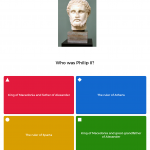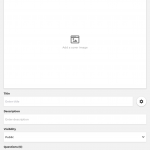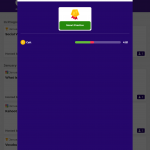Kahoot! is a game-based educational platform. Users can create “Kahoots,” quizzes and surveys, and share them with students, trainees, or other group participants. With Kahoots, educators can test student knowledge, survey student opinions, encourage teamwork, assign creative homework, and gain classroom insights. Kahoot can be used in the classroom or integrated into online courses.
Version: 3.3.3 (iOS), varies with device (Android)
Compatibility: Available on iOS and Android devices.
Price: Free and paid options available
Target Audience: Educators seeking to integrate active learning activities into their classes.
Bottom Line: Kahoot! allows users to engage students through interactive quizzes and surveys.
Not a valid Json Element
Likes |
Dislikes |
|
|
Features and Options:
“Kahoots” are quizzes and surveys created and edited by users on a web browser or using the app. Kahoots can be integrated into a variety of educational and training settings. Educators and students can create their own Kahoots and share them with others. To create a Kahoot, the user must create an account. Users seeking to participate in existing Kahoots do not need to create an account.
There are three types of Kahoots– quizzes, jumbles, and surveys. Quizzes are competitive and allow players to choose one correct answer from multiple answers. Jumbles are competitive and allow players to drag answers in the correct order. Surveys are informative and allow players to indicate their opinion. At the time of this review, users can only create Kahoot quizzes on the app, while all three types of Kahoots can be created using the website.
Kahoot! offers creators two ways to issue their Kahoots, challenges or live games. Live games are completed synchronously. The creator of the Kahoot activates it on their device and shares a “Game Pin.” The Kahoot creator has discretion to specify the settings of their live game, such as enabling an automatic name generator, randomizing the order of questions, and automatically or manually moving through questions.
On live games, players can play on teams, sharing devices, or play one-on-one. Players type the Game Pin into their app or use the website and provide a nickname. When the game begins, all questions appear on the creator’s screen, and players submit their answers on their own screen. After all players have submitted their answers, Kahoot shows the number of individuals who chose each answer.
Challenge Kahoots are asynchronous and can stay open for an assigned time period. Kahoot creators can share challenges many ways including a Game Pin, email, messaging or on connected apps. After a player has completed the challenge, they appear on a leaderboard ranked in relation to other players. Kahoot creators have less discretion to change specific games settings under challenges.
Most Kahoot! features are free for educators and students, but some additional features can be purchased. Paid versions allow for a larger number of Kahoot participants and provide Kahoot reports, greater organizational capacity, and the ability to work on “Kahoots” with other educators.
Kahoot! has an additional “Discover” feature which allows all users to explore public Kahoots. The Discover feature organizes Kahoots into categories such as history, math, trivia, earth and space, climate change, etc.
Practice Implications:
Educators could use Kahoot! in class to quiz students on a number of issues including– ethical issues, best practices, or even clinical diagnoses. Faculty could use Kahoot! to review student understanding of materials and provide feedback in the class setting. Team-based live games could spark collaboration and teamwork as students try to solve problems together. Educators could also create assignments where students need to incorporate Kahoot! into presentations. Finally, challenges could be used in online classes or to provoke continued thinking outside of seated classes.
Privacy Policy:
User data is shared with third party hosts. Privacy policy can be found here: https://kahoot.com/privacy-policy/






